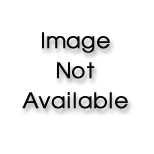
Concept explainers
(a)
Interpretation:
The state (either oxidized or reduced) of
Concept Introduction:
(b)
Interpretation:
The way
Concept Introduction:
(c)
Interpretation:
The substrate type that
Concept Introduction:
(d)
Interpretation:
The form of
Concept Introduction:
(e)
Interpretation:
The general equation that includes
Concept Introduction:
Want to see the full answer?
Check out a sample textbook solution
Chapter 21 Solutions
FUND.OF GEN CHEM CHAP 1-13 W/ACCESS
- What happens with NADH under aerobic versus anaerobic conditions?arrow_forwardWhen L-ascorbic acid participates in a redox reaction, it is converted to L-dehydroascorbic acid. In this reaction, is L-ascorbic acid oxidized or reduced?arrow_forwardIn oxidative phosphorylation, what is oxidized and what is phosphorylated?arrow_forward
- How Do Catabolism and Anabolism Differ? What are the features that generally distinguish pathways of catabolism from pathways of anabolism?arrow_forwardWhat does the term “oxidative phosphorylation” mean? What is substrate-level phosphorylation? Are these processes the same? Explain.arrow_forwardWhat is the ATP yield from the oxidation of one molecule of nervonic acid?arrow_forward
- In the reaction catalyzed by malate dehydrogenase, what molecules are classified as the reduced donor?arrow_forwardWhich pathways use substrate-level phosphorylation and which use oxidative phosphorylation?arrow_forwardWhich steps are coenzymes formed? What are these molecules? Is the reaction to form them endergonic or exergonic?arrow_forward
 BiochemistryBiochemistryISBN:9781305577206Author:Reginald H. Garrett, Charles M. GrishamPublisher:Cengage Learning
BiochemistryBiochemistryISBN:9781305577206Author:Reginald H. Garrett, Charles M. GrishamPublisher:Cengage Learning
